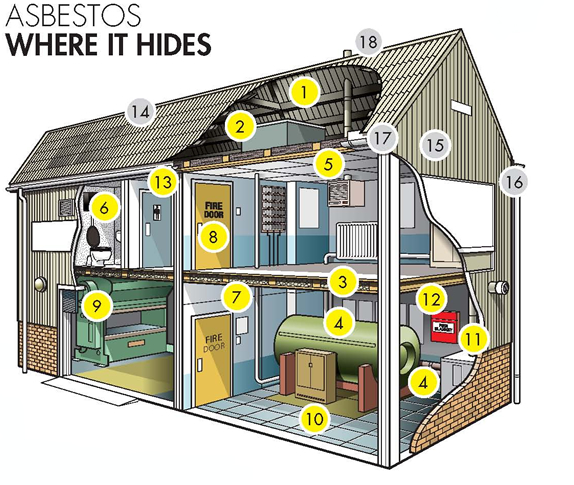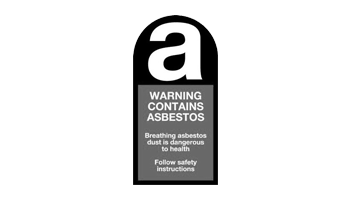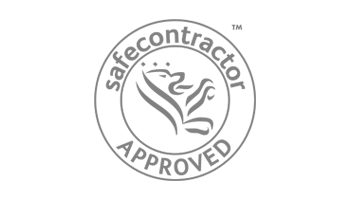Asbestos Surveying Oxford, Oxfordshire
There are two types of asbestos survey, these are;
- Asbestos management survey
- Refurbishment and demolition survey
Asbestos management survey
A management survey is the standard survey. Its purpose is to locate, as far as reasonably practicable, the presence and extent of any suspect asbestos containing materials in the building which could be damaged or disturbed during normal occupancy, including foreseeable maintenance and installation, and to assess their condition.
What’s involved in an asbestos management survey?
The survey will include a thorough inspection of the entire building, including floors, walls, roofs, ceiling voids, etc. Depending on your premises, some intrusion might be necessary to access and assess the condition of all the asbestos containing materials.
Before undertaking an asbestos management survey, we would require site drawings, plans or any available building specifications. In addition we would require information on the location of any known asbestos containing materials and details of any remedial treatment previously undertaken.
Who needs asbestos report?
Under the Control of Asbestos Regulations 2012, anyone responsible for a non-domestic premises constructed before 2000 is legally obligated to have an asbestos report plan. Commercial buildings don’t just include factories or offices. Asbestos legislation extends to schools, churches, and even the communal areas of blocks of flats.
As the duty holder for a non-domestic premises, your legal responsibilities include:
- Identifying any asbestos containing materials
- Assuming asbestos containing materials are present in areas which can’t be accessed and managing these accordingly
- Undertaking remedial work as required to either remove or contain any dangerous asbestos containing materials
- Conducting risk assessments to assess the potential for asbestos contamination
- Keeping accurate records and maintaining an asbestos register
Refurbishment and demolition surveys
This type of survey is used to locate and describe, as far as reasonably practicable, all asbestos containing materials in the area where the refurbishment work will take place or in the whole building if demolition is planned. The survey will be fully intrusive and involve destructive inspection, as necessary, to gain access to all areas, including those that may be difficult to reach. A refurbishment and demolition survey may also be required in other circumstances, eg when more intrusive maintenance and repair work will be carried out, plant dismantling or any works that may disturb the fabric of the building.
What’s involved in a refurbishment and demolition survey?
The survey will include a full destructive inspection of the areas subject to refurbishment or demolition.
Refurbishment and demolition surveys are intended to locate all the asbestos in the building (or the relevant part), as far as reasonably practicable. It is a disruptive and fully intrusive survey which may need to penetrate all parts of the building structure. Fully intrusive inspection techniques are required to break through walls, ceilings, cladding and partitions, and open up floors to inspect every possible location for any hidden asbestos containing materials prior to any works that may disturb the fabric of the building.
Who needs asbestos refurbishment and demolition survey?
Under the Control of Asbestos Regulations 2012, this type of survey is required before any refurbishment or demolition work is carried out to any building constructed before 2000.
Why choose Amicus for asbestos surveying?
The Amicus Environmental asbestos surveyors are qualified and completely impartial and professional. Their training and background not only ensures you comply with all your legal obligations, it also means you can rest assured knowing your asbestos report is in good hands.
To discuss your needs, you can call Amicus’ asbestos surveyors on 01993 869 320. Alternatively, you can send an email enquiry and we will call you back regarding asbestos surveying.
1. Sprayed coatings on ceilings, walls, beams and columns
2. Asbestos cement water tank
3. Loose fill insulation
4. Lagging on boilers and pipes
5. AIB ceiling tiles
6. Toilet seat and cistern
7. AIB partition walls
8. AIB panels in fire doors
9. Asbestos rope seals, gaskets and paper
10. Vinyl floor tiles
11. AIB around boilers
12. Textiles eg fire blankets
13. Textured decorating coatings on walls and ceilings eg artex
14. Asbestos cement roof
15. Asbestos cement panels
16. Asbestos cement gutters and downpipes
17. Soffits AIB or asbestos cement
18. Asbestos cement flue







